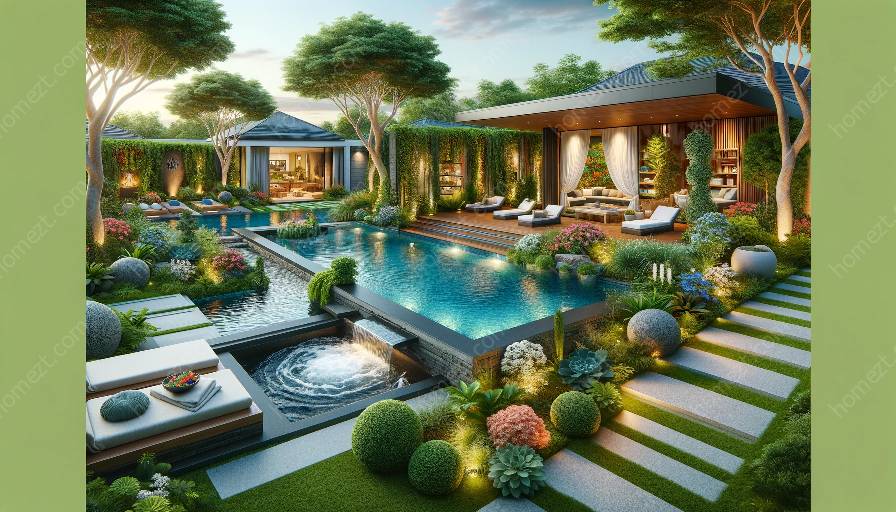When it comes to relaxation and rejuvenation, spas play a crucial role in creating a tranquil environment. There are various types of spas, each with its unique features, and understanding them can help in designing spa landscaping that complements the overall atmosphere. Furthermore, the connection between swimming pools, spas, and relaxation is essential to consider when planning a comprehensive relaxation area.
Introduction to Spa Landscaping
Spa landscaping involves the strategic placement and design of different types of spas within a landscaped area to create a harmonious and serene setting. It often incorporates elements of nature, such as water features, plant life, and natural materials, to enhance the overall ambiance and provide a luxurious experience for visitors. To create a successful spa landscaping design, it's essential to understand the various types of spas available and how they can be integrated into the overall layout.
The Connection Between Swimming Pools and Spas
Swimming pools and spas are frequently seen together in luxury resorts, residential properties, and wellness centers. While swimming pools offer a refreshing and invigorating experience, spas are dedicated to relaxation and therapeutic benefits. Their combination allows individuals to enjoy the best of both worlds, providing an opportunity for physical activity and unwinding in a tranquil environment. Understanding how different types of spas can complement swimming pools is crucial when planning a cohesive and inviting relaxation area.
Types of Spas and Their Unique Features
1. Hydrotherapy Spas
Hydrotherapy spas are designed to provide therapeutic benefits through the use of water pressure, heat, and buoyancy. These spas typically feature strategically placed jets that target specific muscle groups, promoting relaxation and alleviating tension. Incorporating hydrotherapy spas into spa landscaping can create an immersive wellness experience by allowing visitors to benefit from the healing properties of water while surrounded by nature-inspired elements.
2. Aromatherapy Spas
Aromatherapy spas utilize scented essential oils and aromatic compounds to enhance relaxation and promote overall well-being. These spas often feature diffusers or steam generators that release soothing scents, creating a sensory-rich environment that contributes to stress relief and emotional balance. When integrating aromatherapy spas into spa landscaping, careful consideration should be given to the selection of plants and natural fragrances to complement the aromatherapy experience.
3. Saltwater Spas
Saltwater spas utilize saline solutions instead of traditional chlorine-based systems to create a more natural and gentle environment for relaxation and muscle relief. These spas are known for their skin-nourishing properties and are often favored by individuals with sensitive skin or allergies. When incorporating saltwater spas into spa landscaping, the use of natural materials and water features can further enhance the soothing and harmonious atmosphere.
4. Hot Tub Spas
Hot tub spas are characterized by their heated water and massaging jets, providing a cozy and inviting space for relaxation and socializing. They are often designed with built-in seating and can accommodate multiple users, making them ideal for social gatherings or private retreats. Incorporating hot tub spas into spa landscaping can create focal points for social interaction and relaxation, contributing to the overall ambiance of the space.
5. Cold Plunge Spas
Cold plunge spas offer a refreshing and invigorating experience by providing a cold water plunge or immersion. They are commonly used to complement hot saunas or steam rooms, promoting circulation and revitalization. When considering cold plunge spas in spa landscaping, the integration of water features and natural cooling elements can enhance the overall experience, creating a balanced and rejuvenating environment.
Conclusion
Understanding the various types of spas and their unique features is essential for creating an attractive and real spa experience. By incorporating different types of spas into spa landscaping designs, individuals can enjoy a diverse range of therapeutic and relaxing experiences within a harmonious and natural setting. Additionally, the connection between swimming pools, spas, and relaxation plays a crucial role in designing comprehensive relaxation areas that cater to diverse needs and preferences.


